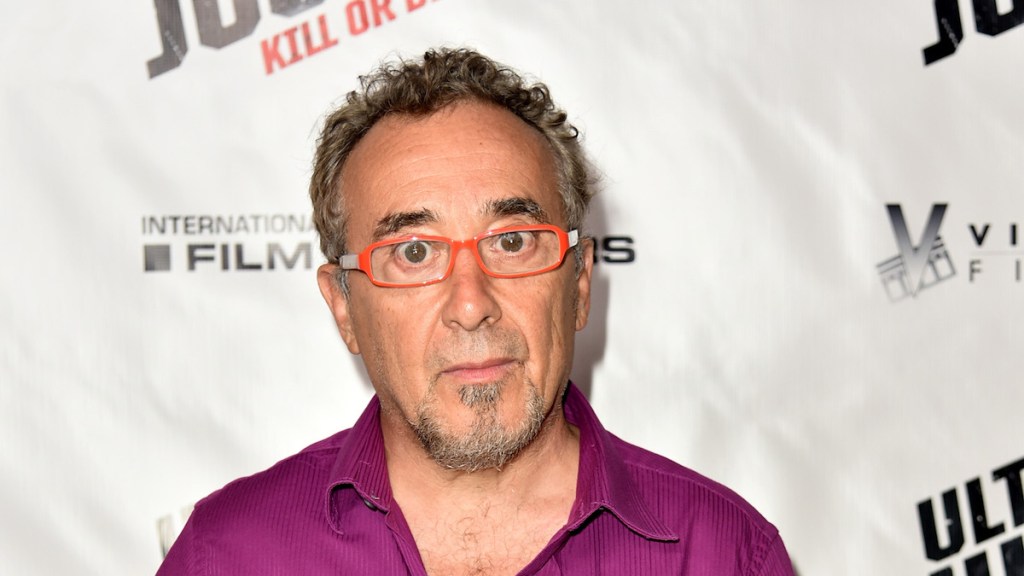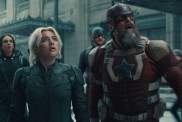ComingSoon’s Colin Tessier spoke to Mindcage director Mauro Borrelli about working with a star-studded cast and seeing Martin Lawrence lean into a more serious role than fans might expect from him. The film is set to hit theaters and VOD on December 16.
“In this spellbinding thriller, detectives Jake (Martin Lawrence) and Mary (Melissa Roxburgh) seek the help of an incarcerated serial killer named The Artist (John Malkovich) when a copycat killer strikes,” reads the film’s synopsis. “While Mary searches for clues in The Artist’s brilliant but twisted psyche, she and Jake are lured into a diabolical game of cat and mouse, racing against time to stay one step ahead of The Artist and his copycat.”
Colin Tessier: What was it like working with a star-studded cast that includes Martin Lawrence and John Malkovich?
Mauro Borrelli: And Melissa Roxburgh, of course. Fantastic. What can you get better than that? You can’t have it. John obviously is such a great actor with theater experience, so [that] allowed us to be able to shoot several pages in the same day, filled with dialogue. Of course, these guys can memorize ten pages in one hour, so it was fantastic. He had a suggestion. It was nice to see his notes on the dialogue. He worked with Melissa in kind of wrapping the scene. You know the cell that we shot, the prison cell, we built that.
We couldn’t find a sound stage where we were shooting or a proper warehouse to build that, and then we went to a high school, and I saw this very big theater, like 500-1000 seat, I don’t know, and they had a big stage. So I said, “I think John is going to be back on stage,” and we built [the cell] there. It had a great atmosphere, the great feeling that you have in a theater. So to work with him was fantastic, and Martin of course. Martin came a few days towards the end of the shooting with Malkovich, and he stayed until the end of filming. Of course, he’s a comedian, so you don’t know, in the beginning, how should I approach this? But then we had a good talk. He was so disciplined, and he’s willing to play a different Martin Lawrence. I think he did a great job.
Exactly. Martin Lawrence is known known for comedy roles, as a viewer, it was striking to see him playing such a serious character. What did you think about seeing Lawrence step out of his comfort zone?
Well, we had some good laughs in between takes [laughs]. But I noticed that he would stay in character. With a few exceptions, where I saw Martin being the Martin Lawrence that we all know, through some takes where he couldn’t resist, where he kind of couldn’t resist. For the rest, I think he was disciplined to keep himself in character. I remember seeing him outside a mobile home and walking to the set, and having that sadness of, in the story, he’s a tortured detective with a past. So he was keeping that in the back of his head. I really appreciated [that] he was doing that because it gave me the confidence, “Okay, this guy’s taking this very seriously.”
The movie features a story that’s full of plenty of twists and turns. Going back to the beginning of the process, what drew you to the script as a director?
I wanted to mislead the audience a little bit in trying to make them guess at something and then be wrong. I think in the script, we had even more elements to distract and more convoluted, and we had to simplify it a little bit. But hopefully, I will still be able to maintain that intention. So I’m a big fan of The Village and Sixth Sense by [M. Night] Shyamalan. So I thought, “What if I can do a detective story with a little bit of paranormal/supernatural element in a combined art?”
Then maybe let the people think this is traditional, and we know what’s going on to the end, and then leave everybody surprised. But basically, this is the story about geo detectives, Martin Lawrence and Melissa Roxburgh, [and] they go through a similar experience, but one doesn’t do the mistake of the other one. The other one doesn’t open herself to the world. It’s basically how a different decision can change in the course of your story.
Another theme of the story, at least in a subtle way, is clearly religion, as it impacts Jake, The Artist, and Mary in multiple ways. How did you approach that as a director?
It is connected with the religious and religion in art. I was a fine art painter for many years in Italy, and I used to paint copies of 16th -century painting and work in a church doing a restoration. I remember, one of my first emotional [scares] that I had when I was a kid, I was like seven, we entered into this old church. There was a Jesus with a crown, bleeding, in painting in the church, in the dark. It was around lunchtime, and we all go in. Then we all watch the painting, like imagine six kids watching this painting. Very dark because the smoke from the candles. I just heard a boy say, “It moved the eyes!” We all ran, terrorized.
I think there was something, in religious iconography, crucifixion, and stuff like that, it’s also scary. So I thought [The] Artist tried to be a great painter, and the best way to learn painting is through copying the master. Usually, the masters do religious painting because the masters in the 15th-16th century, all religion-oriented. So I think this guy, copying all this painting, he started to have the religion going into his head because of the painting. Then religion started to give him a reason to do what he does as an excuse for the problem that he had as a child.
Overall, what did you enjoy the most in the process of making the movie?
I really enjoyed it. I had the chance to work with two of the best painters in Italy that did some of the painting for the film, which happened to be, we grew up together, and now they’re very famous. I feel like I abandoned painting to be a filmmaker, but I kind of reunited with that. I’m very proud of the last scene of the film.










